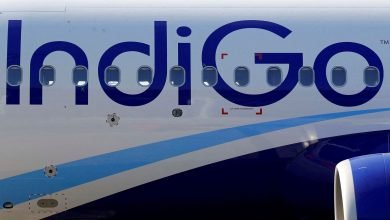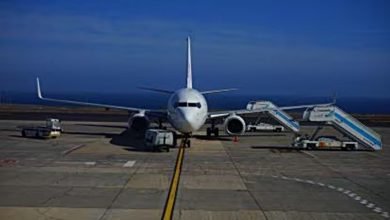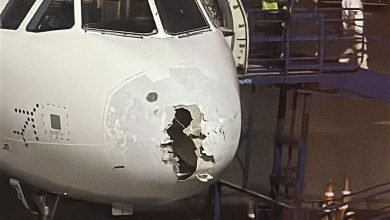India has immense potential for regional planes, looking at it as our main market: ATR CCO Alexis Vidal | Business News

European regional aircraft manufacturer ATR, which has a dominant market share in India’s small regional aircraft market, believes that the time has come for the segment to take off in earnest. Growth in India’s broader civil aviation sector is booming, but the regional air connectivity segment remains largely unpenetrated as regional and intercity travel is still dominated by road and railways. This largely untapped market in combination with expansion in small regional airports and the policy push for regional air connectivity offers a promising growth opportunity, according to ATR’s Chief Commercial Officer ALEXIS VIDAL. In an interaction with SUKALP SHARMA, Vidal delves into the segment’s growth potential and why India has emerged as a critical market for ATR. Edited excerpts:
What is your view on the Indian market for regional aircraft? Indian Airlines have placed huge orders for narrow-body jets, but we have not seen similar enthusiasm for regional turboprops despite the government’s push to enhance regional air connectivity.
We are looking at India as one of our main markets, or the main market. Yes, Indian airlines have been ordering quite a lot of large narrow-body aircraft. But I think, not just in India but globally too, the regional aircraft market does not really respond to the same purchasing strategy and forecast as the market for larger planes. Still, regional connectivity in India in particular is very promising. We have 67 ATR aircraft India and the number will soon go over 70. We believe there is a potential in India for another 200 (regional) aircraft in the coming decade. That is a strong potential, and all this is very well supported by policies like (regional connectivity scheme) UDAN (Ude Desh ka Aam Nagrik).
We usually consider up to 400 nautical miles, or around 750 kilometres, as regional air routes. Going by the pattern of mobility in India, which we have studied for the past two years, 90 per cent of intercity trips are under 400 nautical miles. And 97 per cent of those are on cars, buses, and trains, which leaves air transportation with a share of just 3 per cent. And that is where you realise the potential of India, because if you benchmark that against other markets in Europe or Asia, that number is typically double or triple—6 to 9 per cent. Going from 3 per cent to 6-9 per cent would be a tremendous increase in regional air transportation in India. And I think that is totally realistic, because it is what we see in other markets.
You had earlier mentioned that ATR sees another 300 potential regional air connectivity routes in India. Is there a timeline in your forecast in terms of the development of such routes?
We are talking purely in terms of potential…I am not saying we are going to open 300 new routes overnight…We have looked at anonymized GPS data for numerous trips that are currently ground-based, and measured the number of potential air routes that could be opened because there is sufficient demand and the speed and convenience of air transportation would appeal to many regular commuters on such routes. So, 300 routes is the potential we see as of today. Of course, it is going to take time to transform that into actual air transport routes, some of which might need supportive policies like UDAN.
Are you seeing interest from new customers in India or is it mostly from your existing customers? Which segment is likely to drive the growth?
Story continues below this ad
I think it is and will be a combination of both. There is IndiGo, which is our largest airline operator in the country. Of course, there is Alliance Air, which is our long-standing partner and we expect that relationship to continue. New airlines are also coming into play, like Fly91. So, we believe growth will come through the combination of the existing and new customers, including startup regional airlines.
Are you in active discussions with your current customers and other airlines in India for potential aircraft orders?
We are always in discussion with customers and prospects. I will not comment specifically on one or the other. But yes, given the potential of the market in India and the relevance of the ATR as a product, it is quite natural that we are entertaining discussions with different parties.
Alliance Air used to be the regional arm of Air India till the latter was a government airline. But now Alliance Air is a government-owned carrier while the privatized Air India does not have any regional air operation. Any discussion with Air India to explore building its own regional network?
Story continues below this ad
Like I said, I would not be able to comment on any individual airline, but in general, given the potential of India, I would expect major players to seriously consider building their own regional network.
In your view, what are the challenges to growth of regional air connectivity India and what more should the government do to give it a boost?
There are several things, one of which is having the necessary infrastructure and regional airports. Your government is already working on rapidly increasing the number of airports…but beyond that, airlines with regional operations need to be supported through access to airport slots, particularly at large tier-I city airports to enhance connectivity between tier-I, tier-II, and tier-III cities. That kind of support is important to keep the regional network valid and viable. Other ideas could be around flight operations—in terms of flight time and schedule optimisation—and even focusing on developing the regional air freight market and ecosystem with policy support.
In ATR’s experience globally, what usually works better—smaller standalone regional airlines or those backed by larger airline groups?
Story continues below this ad
We have about 200 operators in 100 countries, and the majority are smaller operators, because their ecosystem and market is not big enough for a large-scale operation. But we do have large airlines also as customers, including IndiGo, which is among our top three airline customers globally by fleet size. So, both models exist and can be suitable for different markets depending upon their individual dynamics and conditions.
In a market like India, what we believe works best is to make sure that airlines—irrespective of their size—are able to deliver affordability to passengers. That is why our aircraft are, I think, very well suited for such a market because they are the most economically relevant aircraft to operate on regional routes.
What according to you makes turboprop aircraft like those of ATR best suited for regional routes? Can smaller jet engine aircraft with similar seat capacity be effective replacements?
If I drive you through the economics, if you fly on a regional sector, an ATR-72 aircraft is basically consuming 45 per cent less fuel than a similar sized jet on routes of around 230 nautical miles, which would broadly be the average length of regional sectors. That level of gain of efficiency makes the ATR aircraft fully relevant, and jet aircraft not so relevant for regional sectors. It may come across as a biased view, but it is a factual view of the economics behind things like fuel burn on a regional sector. I don’t see a case where anything else other than a turboprop being the most efficient for regional flights.
Story continues below this ad
Do you look at eVTOLs (electric vertical take-off and landing vehicles) as a future challenge for regional aircraft players like ATR?
I would say it is complementary…eVTOL is likely to be mostly for intra-city mobility or urban mobility, and even that is yet to be fully developed, certified, and funded. We have been here for quite some time, and we have proven the efficiency of the ATR in inter-city regional operations. I think the three segments—urban mobility, regional air operations, and non-regional domestic air operations—are all complementary one to another and we are at the centerpiece of that…In the last five years, we have seen 200 routes being opened by ATR, and some of them have even been upgraded to larger jets. That is a proof of success that (regional) aircraft are allowing airlines and the government to create routes and develop them further.



